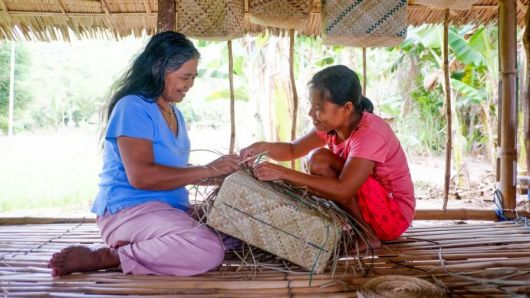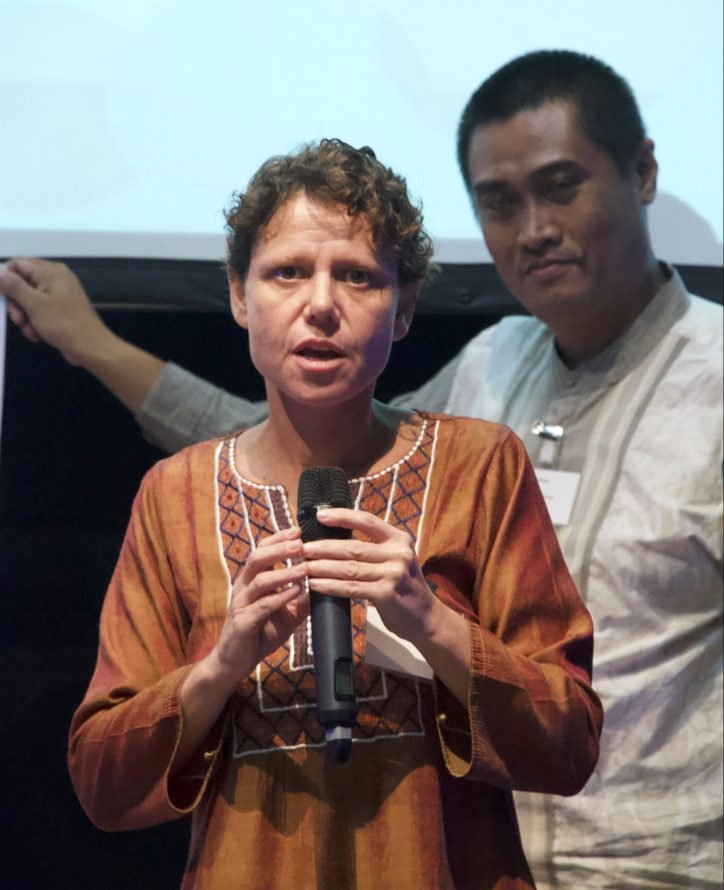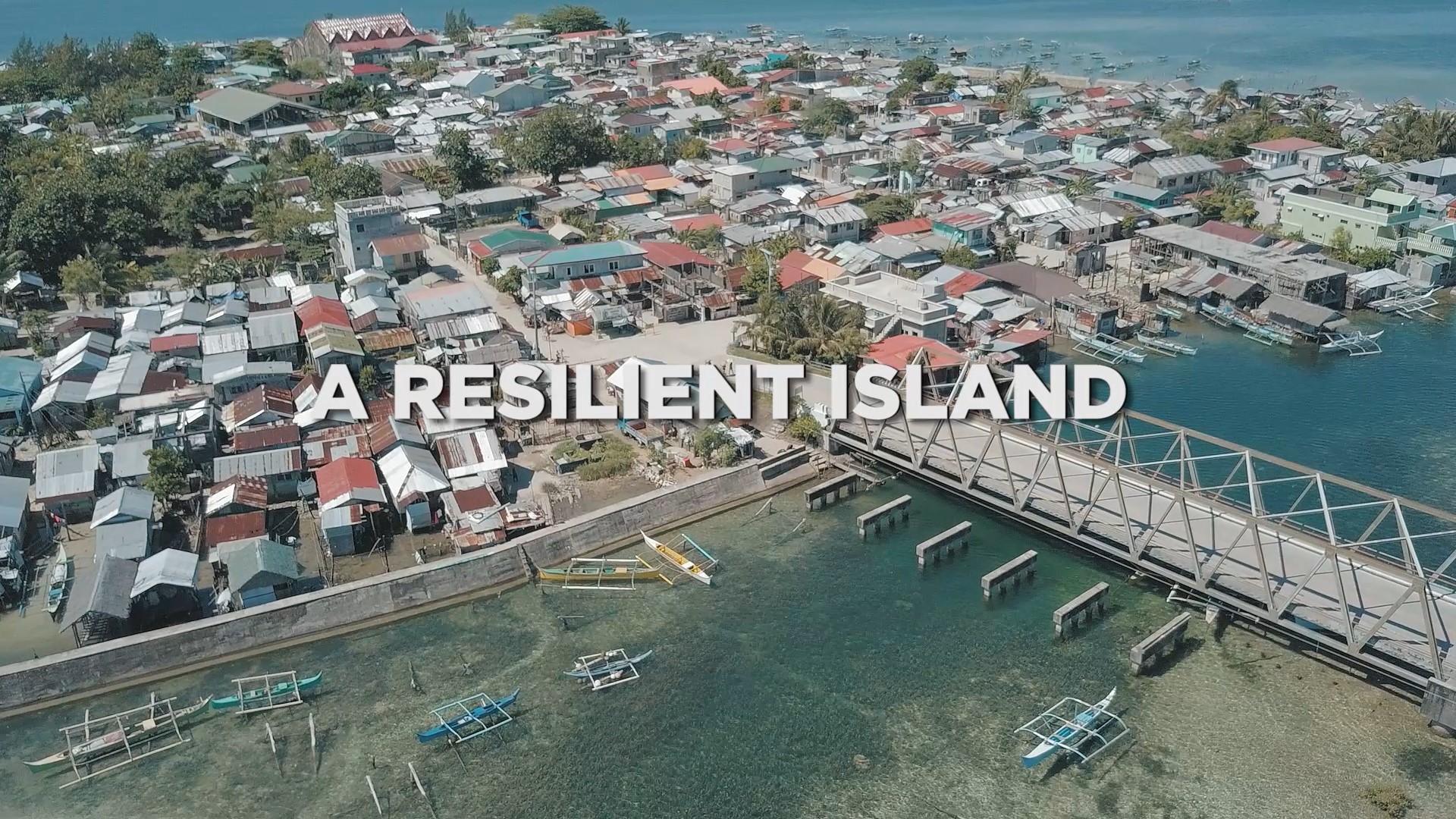10/02/2021 - “What we did won’t stop because we stopped”: Climate resilience in the Philippines

This article has been published earlier on the Cordaid website. Picture: women waevers in Guiuan, the Philippines. Credit: Cordaid
Anat Prag, country director Cordaid Philippines, reflects on 10 years of resilience work
For the past decade you led Cordaid’s Resilience projects building upon its disaster response efforts, first in Indonesia and then in the Philippines. What are you most proud of?
First, I need to give a bit of context. On Boxing day 2004, a tsunami left South East Asia devastated. Caritas initiated a 214-million-euro tsunami recovery programme. I supported the coordination of the combined Caritas response from 2005. Through this work with the Caritas family, I started working very concretely on Community Managed Disaster Risk Reduction (CMDRR) as a part of disaster recovery in Asia. The idea is- if we invest in CMDRR, then the impact of disasters should be lessened.
In 2008 I joined Cordaid and dived into the DRR programme in Indonesia. We were looking at mainstreaming, integrating, and strengthening DRR with Cordaid development partners. In 2010 we started planning at the country level for Partners for Resilience (PfR) – a consortium of five Dutch INGOs, linking disaster, climate, and the environment as a part of an overall framework called Integrated Risk Management (IRM). This is very much based on the cooperation with local actors and different stakeholders. Between 2011 and 2015, I supported Cordaid’s work in PfR Indonesia programme.
“Cordaid within PfR contributed to resilience building by making meaningful and coherent links between climate risks, ecosystems and resilience, by bringing and imparting knowledge on how to manage the ecosystem, and by putting the community at the heart.”
In November 2013, the Philippines was hit by Super Typhoon Haiyan, also known locally as Typhoon Yolanda. The same year Cordaid started preparing to launch a large-scale recovery programme there, which focused on “resilience recovery”. Cordaid was a part of SHO and implemented this large scale recovery programme in 2014 and 2015, where communities and local actors were supported to identify recovery efforts that would make them more resilient to future hazards. I moved to the Philippines at the end of 2014 and started working on aligning the resilient recovery programme with the work under the PfR and other donors, through transitioning from resilient recovery to Integrated Risk Management (IRM). The important part was linking disaster, climate risks with the environment and development; ensuring meaningful participation, local ownership and drive, by supporting multi-stakeholder alliances. This was very different from the usual DRR or recovery programmes implemented. It was all very action oriented; owned and driven by the people – and they could feel the impact.
Looking back, I am proud of the resilience measures that we can link from different resilience and recovery programmes – they have been sustained and have become the basis of longer term efforts on the ground for environmental protection, safer and alternative livelihoods options, water management as well as cooperation – people working together on resilience action. I am proud of the fact that what we have done is very innovative and that it is recognised as such. Our work is replicated in different parts of the Philippines, in multiple municipalities. I am proud of the people we work with because they’re the real champions, and the Cordaid team that was part of the journey.
What didn’t work out the way you had hoped?
Obviously the fact that PfR is not continuing is a big disappointment. We needed to expand this programme. However, we were successful in convincing the national governments to buy in and invest in resilience action. Hopefully, the donors are interested in funding the local governments and the local and national organisations, so they can continue the good work of IRM.

Anat Prag speaking at an event in the Hague, together with Cordaid colleague Yohan Santosa. Credit: Cordaid

Watch this video to learn more on resilience building in Guian. Credit: David Rivas/ PfR
Is there anything Cordaid really did differently compared to other INGOs?
Cordaid within PfR contributed to resilience building by making meaningful and coherent links between climate risks, ecosystems and resilience, by bringing and imparting knowledge on how to manage the ecosystem, and by putting the community at the heart. Integrated Risk Management is also one of the most crucial parts of our work, as well as enabling community groups to work with the local and national government, NGOs, academe, and private sector; and fostering these linkages and cooperation. It was part of our mandate, our methodology in helping local government, business communities, and INGOs to work together to identify and prioritise resilience investment and to build a common ground for resilience strengthening. It was a really important part of how we did things differently.
“The local partners spoke with the Commissioner for Climate Financing. They were so brilliant, so convincing. It was amazing. I really felt proud of the people that I work with and the approaches they are advocating.”
From there, something else stood out- that is our multi-stakeholder approach. People cannot do this alone; We needed to pull in all the capacities at every level, and we showed why it was important and how it could be done.
What – in the longer run – is the impact of Cordaid’s work in the Philippines?
What we started won’t stop because we stopped. The multi-stakeholder alliances that we have supported over the past years are now recognised by local government units as partners for resilience action. They will continue this work. Our Philippines resilience partners will keep advocating to the national and local governments for further investments in resilience action. They have launched a new website for that; the whole richness of materials is there, profiling climate governance in the areas where Cordaid supported its partners. They have also recently participated in the Climate Adaptation Summit and featured the resilience work in the Philippines.
“While talking with the fisherman’s associations, the women farmers, and the lady weavers, I could see how they owned and drive the work we supported. It tells me that we did the right thing.”
Another legacy that will remain is the commitment of public funding for resilience building, after we managed to convince stakeholders about the importance of resilient investment. Mandaue is a good example – there is now public funding for resilience for the entire city of Mandaue. They’ve taken the 10-year resilience strategy – developed by communities, local government, academe, NGOs and the private sector – and aligned it with their development plans under which there is government funding. They have aligned their development funding for 2021 to make sure it helps the city and the most vulnerable groups in the city to strengthen resilience. That’s our legacy.
What special moments for you personally come to mind when looking back at the last ten years?
There are many… some that come to mind include the day I went with all of Cordaid’s local and national partners and networks to the Climate Change Commission Office in Manila to talk about locally-driven IRM strategy building. The local partners spoke with the Commissioner for Climate Financing. They were so brilliant, so convincing. I really felt proud of the people that I work with and the approaches they are advocating.
There have been many moments like that in the different localities we worked in. While talking with the fisherman’s associations, the women farmers, and the lady weavers, I could see how they owned and drive the work we supported. It tells me that we did the right thing.
How has the country changed over the past 10 years?
The cooperation within communities, local, and national actors are now very active, alive, and dynamic in the regions we worked in. For example, when COVID-19 hit, our partners came to Cordaid and said that they needed to respond. They knew how to do it as they knew the local context and needs with regard to COVID-19. Cordaid needed to put the local partners in the driving seat, enabling them to act fast and in a coordinated manner. By the beginning of April 2020, they developed proposals for the response. Cordaid supported those proposals and a local partner-driven response. This collaboration to act fast and efficiently says a lot. I don’t know what the future holds, but if these networks continues to grow, we do have reasons for optimism.
If you could have done one thing differently in that decade, what would it have been?
Maybe I should have travelled more. I have very warm memories of spending time with communities and local governments. That is probably the richest part of my professional experience. I also had to manage finance, projects, the office – so I tried to create a balance between being at the office and being on the ground. With Covid-19 and the related lockdown, we will be looking at travel differently in the future. It won’t be the same again.
What is it you will miss most, now that you have left the Philippines? And what are your plans for the future?
I will miss the culture, the food, the people, the temperature, and the experience – both work and non-work. My kids are much richer because they have their experience of living in Asia. However, next year feels very exciting as well; the last time I lived in Europe was in the Balkans in 2002. So, we have a massive amount to learn about our new world.
The work with Cordaid and PfR has given me and everyone we worked with a massive amount of professional experience that will be a very powerful driving force. I am going to work independently and use my experience for other organisations. The first organisation I am going to work with works in Scotland. That’s going to be really exciting, as it will give me a chance to challenge myself. I have done a lot in Asia, and it will be fun to do it in Europe. I have 25 years of work experience, but the past 10 years with Cordaid in Asia gave me so much that I can take forward. It’s going to be a new journey in 2021.






